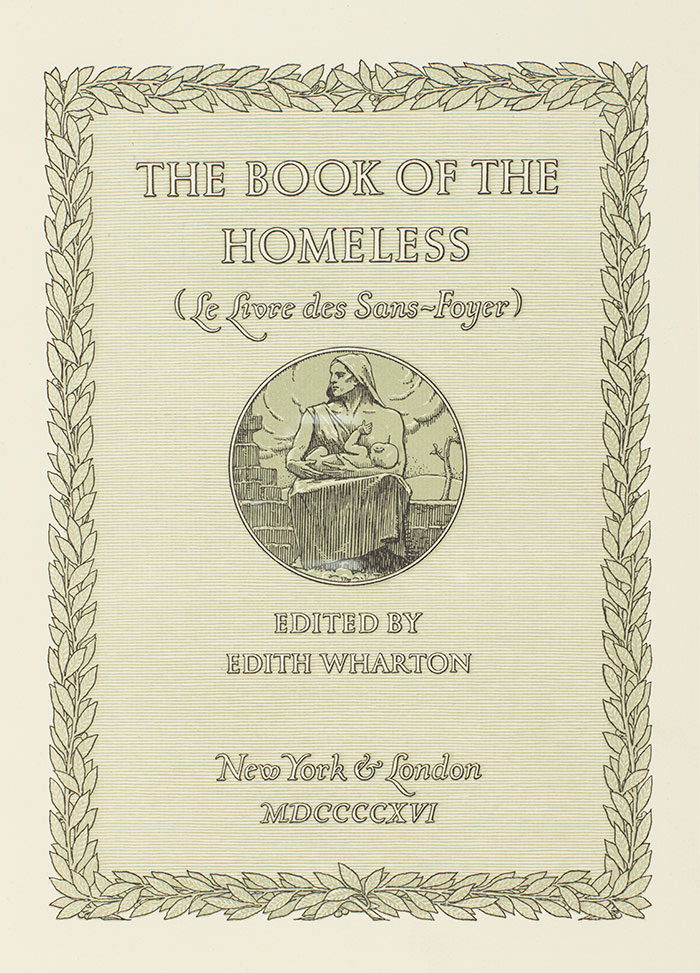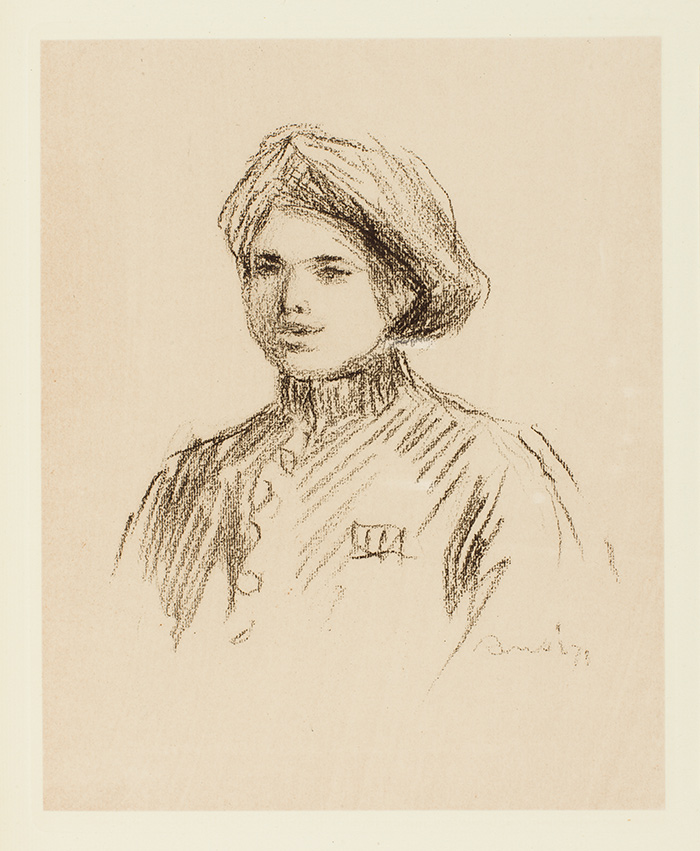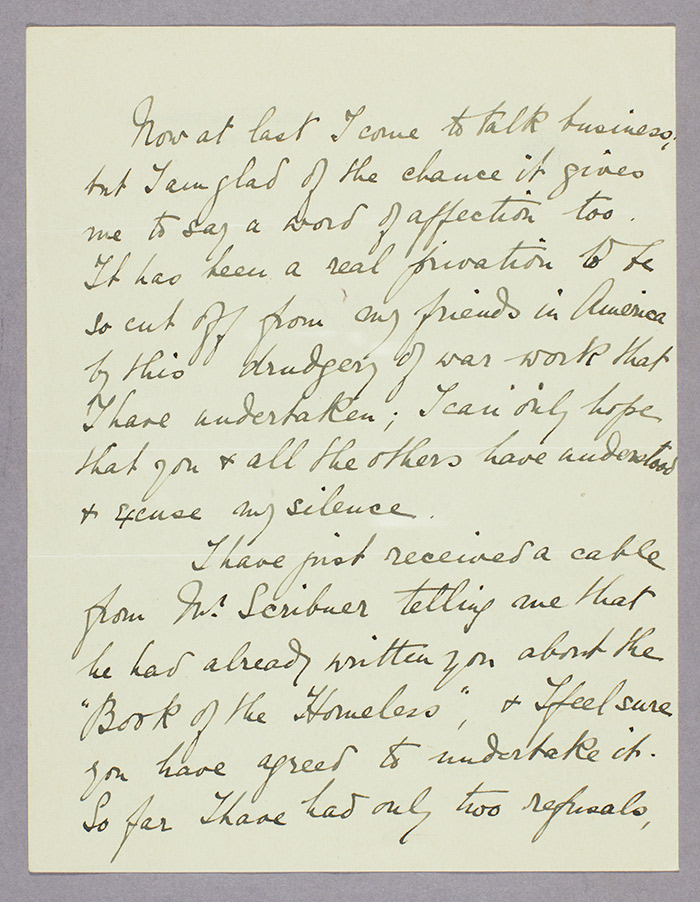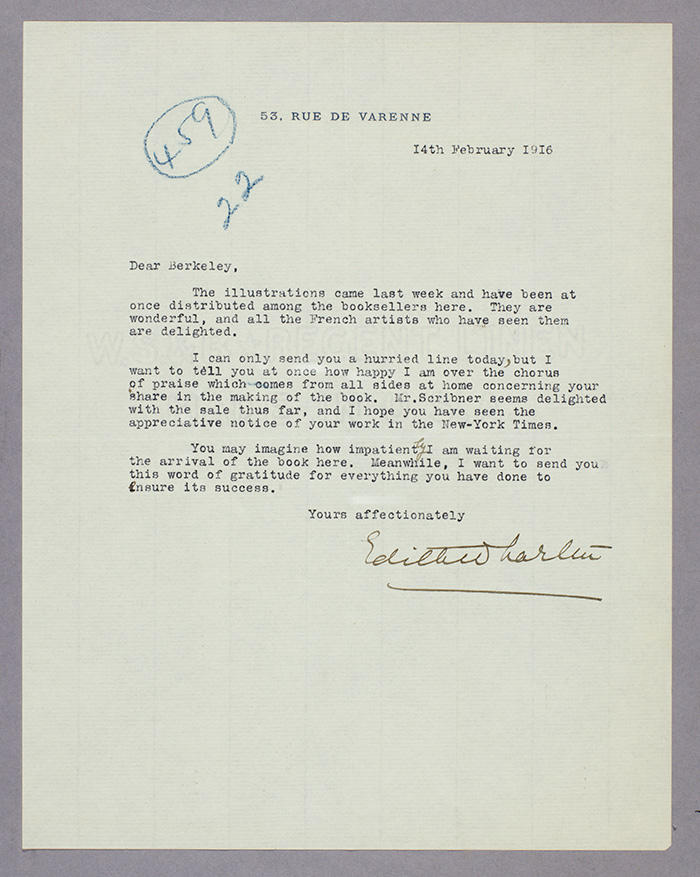Posted on Mon., Aug. 29, 2016 by

Title page of The Book of the Homeless, edited by Edith Wharton and published in 1916. The Huntington Library, Art Collections, and Botanical Gardens.
Few people know that Edith Wharton (1862–1937), the eminent American author, played a significant role in the war effort during World War I. Wharton lived in France for much of her life, and, appalled at the reluctance of the United States to enter the European struggle, she applied her pen to writing in support of the war, including two novels—The Marne and A Son at the Front—and a nonfiction work, Fighting France, from Dunkerque to Belfort.
With her family connections and her celebrity as a writer, Wharton wangled permits to visit the front, and she struck a formidable figure as her chauffeur drove her massive touring car through the muddy battlefields to reach officers and generals, many of whom were family friends. She helped establish the American Hostels for Refugees, and, at the request of the queen of Belgium, she organized the Children of Flanders Rescue Committee in 1915.
That same year, she launched a plan to produce a commemorative volume of original stories, essays, poems, art works, and musical scores by eminent writers, artists, and composers of the day, many of whom were her friends. Wharton proposed the book, whose sales would support her refugee work, to her own publisher, Charles Scribner. Wanting to please one of his most successful writers, he agreed. Then Wharton approached her friend Daniel Berkeley Updike, who headed the Merrymount Press, a Boston fine printing house. He readily signed on.

Reproduction of a charcoal portrait by Auguste Rodin of his son, Auguste-Eugène Beuret (1866–1934), a soldier wounded in World War I. The drawing appeared in The Book of the Homeless. The Huntington Library, Art Collections, and Botanical Gardens.
The Huntington holds the corporate archive for the Merrymount Press, extending to 320 boxes, plus ledger volumes and type samples. Among the records is a file of correspondence between Wharton, Scribner, and Updike about the planning and printing of her proposed volume, The Book of the Homeless. The virtue of the cause at hand is apparent throughout the correspondence, as when Updike writes to Wharton on Sept. 10, 1915, “Both on your account, and on account of what the book stands for, I shall do my best with it.”
A frequent topic of concern is the quality of the book, especially the reproductions of original works by such artists as Auguste Rodin, Claude Monet, Pierre-Auguste Renoir, and John Singer Sargent. Reproducing the artwork proved a challenging task due to shortages caused by the war. Updike wrote to Wharton on Jan. 7, 1916, “This has been a long and difficult piece of work. We have had a good deal of trouble with our inks, because since the war the ingredients in the colours are not reliable, and this has played us some very unpleasant tricks.”
In early 1916, the book appeared to widespread praise. On Feb. 14, Wharton wrote to Updike, “The illustrations . . . are wonderful and the French artists who have seen them are delighted. I want to tell you at once how happy I am over the chorus of praise which comes from all sides at home concerning your share in the making of the book. Mr. Scribner seems delighted with the sales thus far, and I hope you have seen the appreciative notice of your work in The New York Times.”

Detail of a letter from Edith Wharton to Daniel Berkeley Updike, head of the Merrymount Press, Aug. 4, 1915. The Huntington Library, Art Collections, and Botanical Gardens.
The Book of the Homeless is indeed an admirable production, containing 57 original works by such contributors as Henry James, Joseph Conrad, John Galsworthy, Thomas Hardy, William Butler Yeats, Vincent d’Indy, and Igor Stravinsky. It boasts a spirited introduction by former president Theodore Roosevelt (another friend of Wharton’s). A special keepsake edition was printed on French handmade paper in a limited printing of 175 copies, each signed by Updike and housed in a slipcase that also encompasses a portfolio of reproductions of the art works. The Huntington’s copy of the book is number 21 of this limited edition, from the collection of Max Farrand, the first director of The Huntington.
Wharton is best known for her superb novels of upper-class society in New York City, including The House of Mirth, The Custom of the Country, and The Age of Innocence, which won the Pulitzer Prize in 1920 and was adapted as a theatrical film by Martin Scorsese in 1993. Wharton, born Edith Newbold Jones, came from a family endowed with wealth and social position. (Her family is said to have inspired the expression “keeping up with the Joneses.”) In her novels and stories, Wharton portrayed the dramas of influential people who, despite their riches and status, nonetheless experienced heartbreak and tragedy familiar to people of all classes.
This year, we celebrate the centenary of Wharton’s remarkable Book of the Homeless, produced by three fine practitioners—a writer, a publisher, and a printer—in ardent support of the refugees made homeless by one of the most devastating wars in history.

Letter from Edith Wharton to Daniel Berkeley Updike, Feb. 14, 1916. The Huntington Library, Art Collections, and Botanical Gardens.
Sara S. “Sue” Hodson is curator of literary manuscripts at The Huntington.